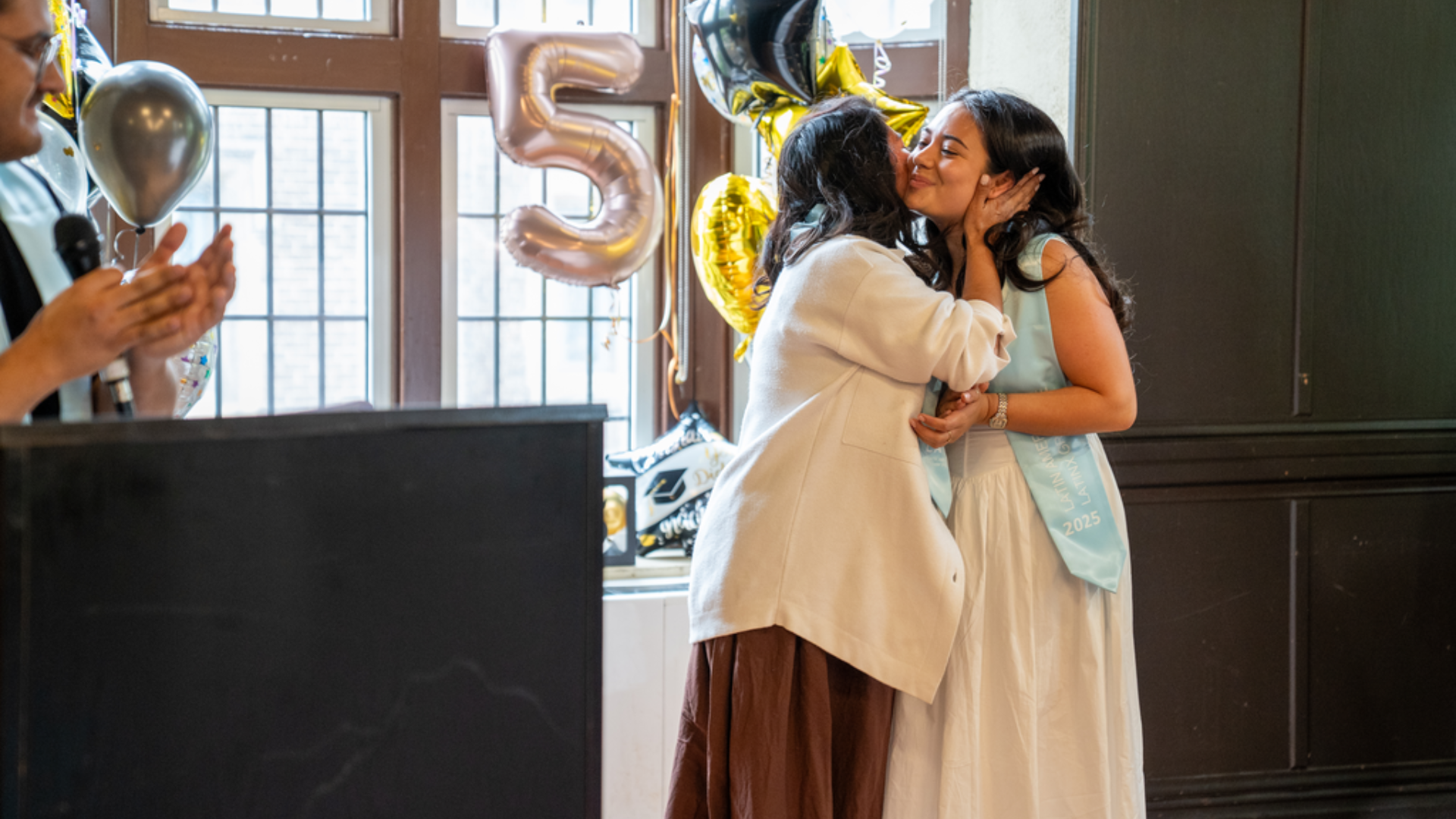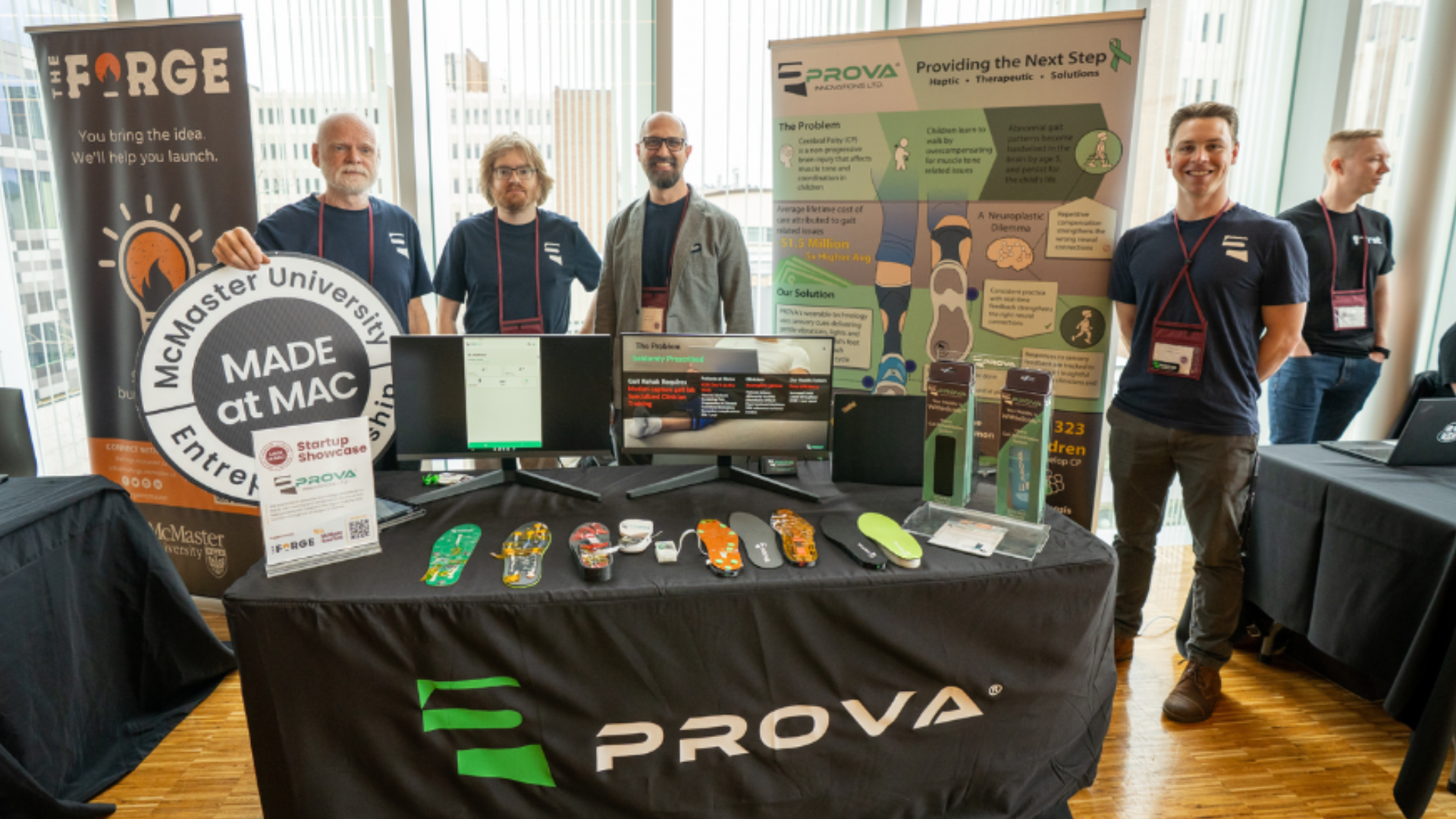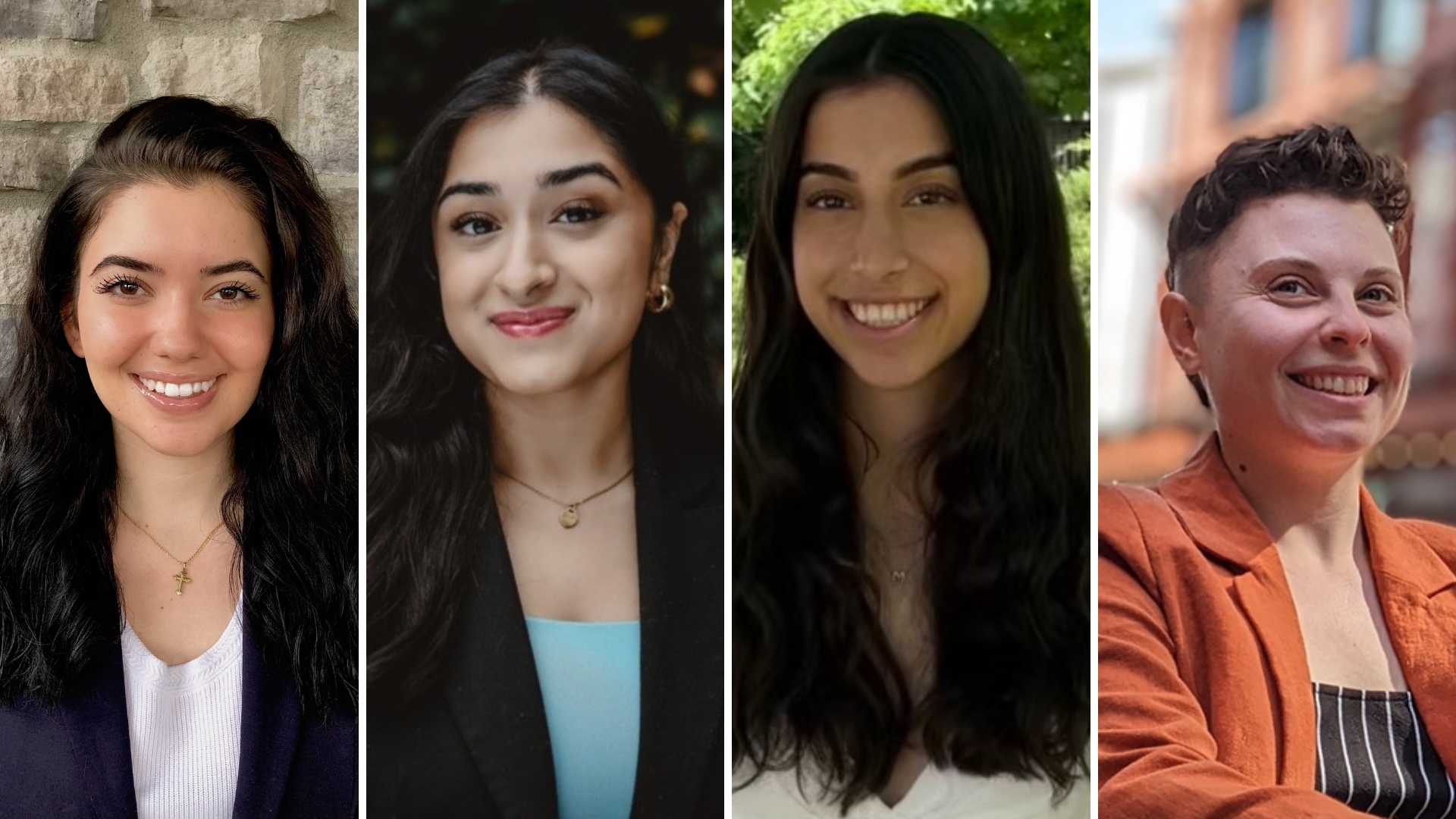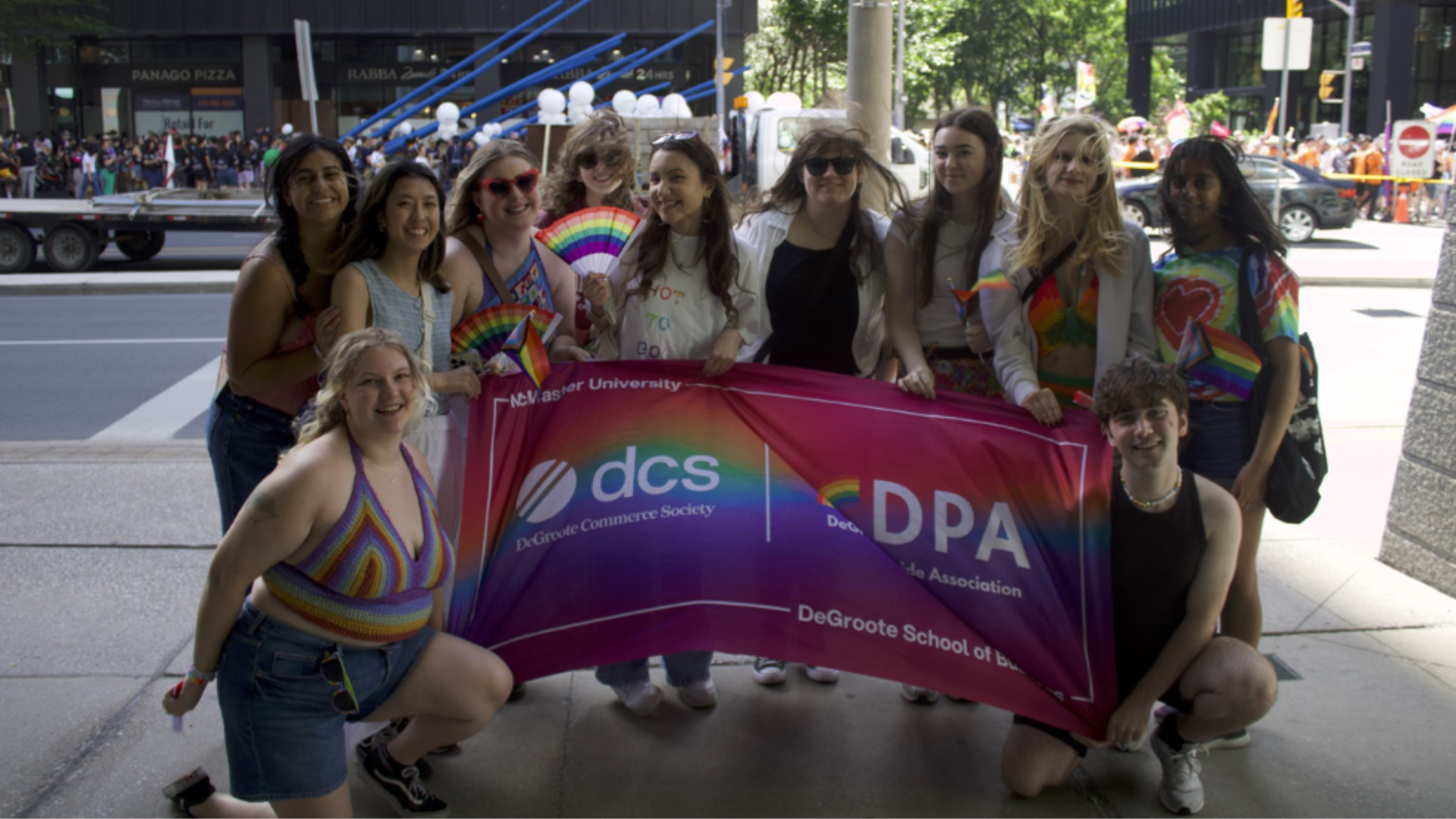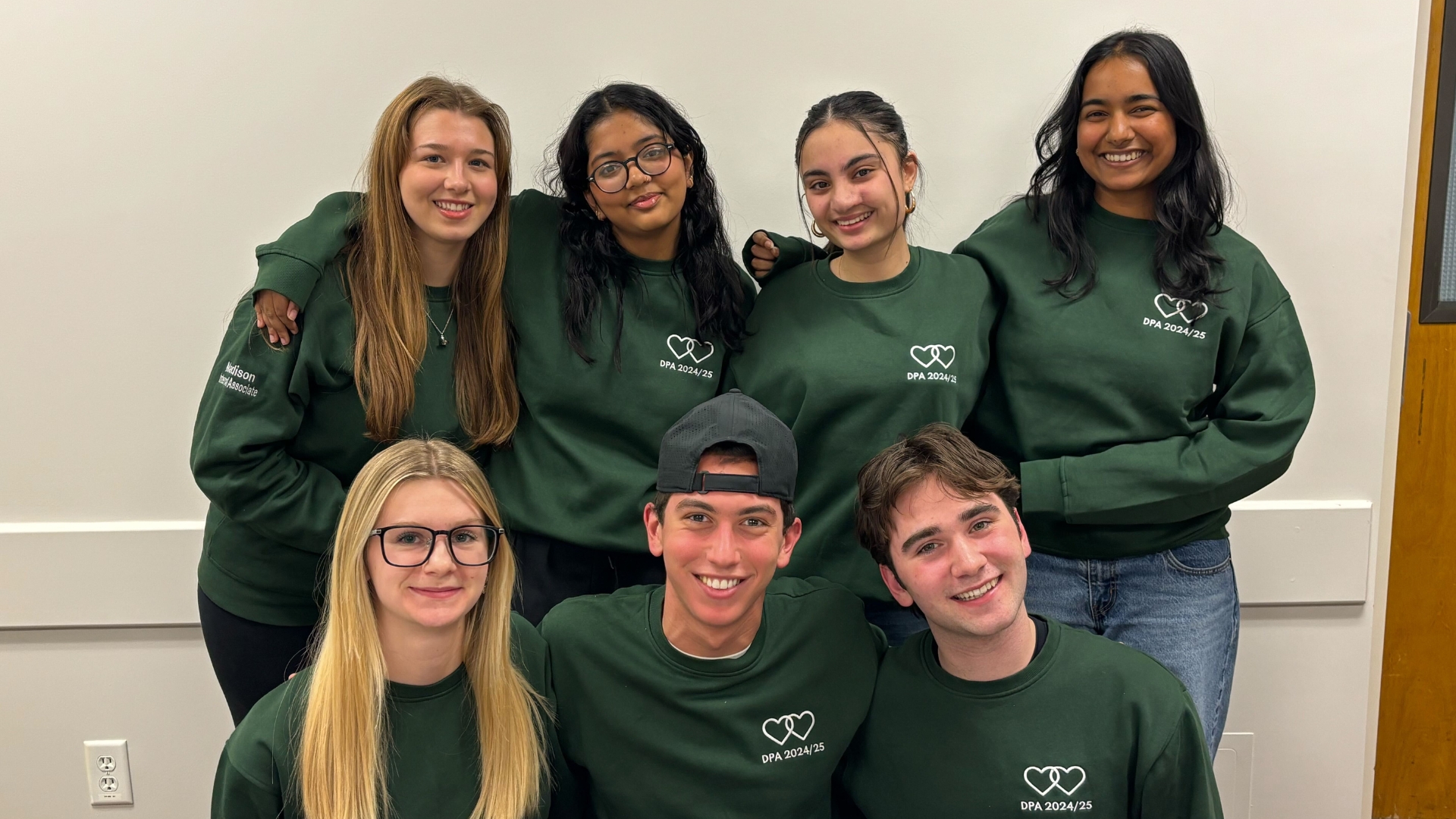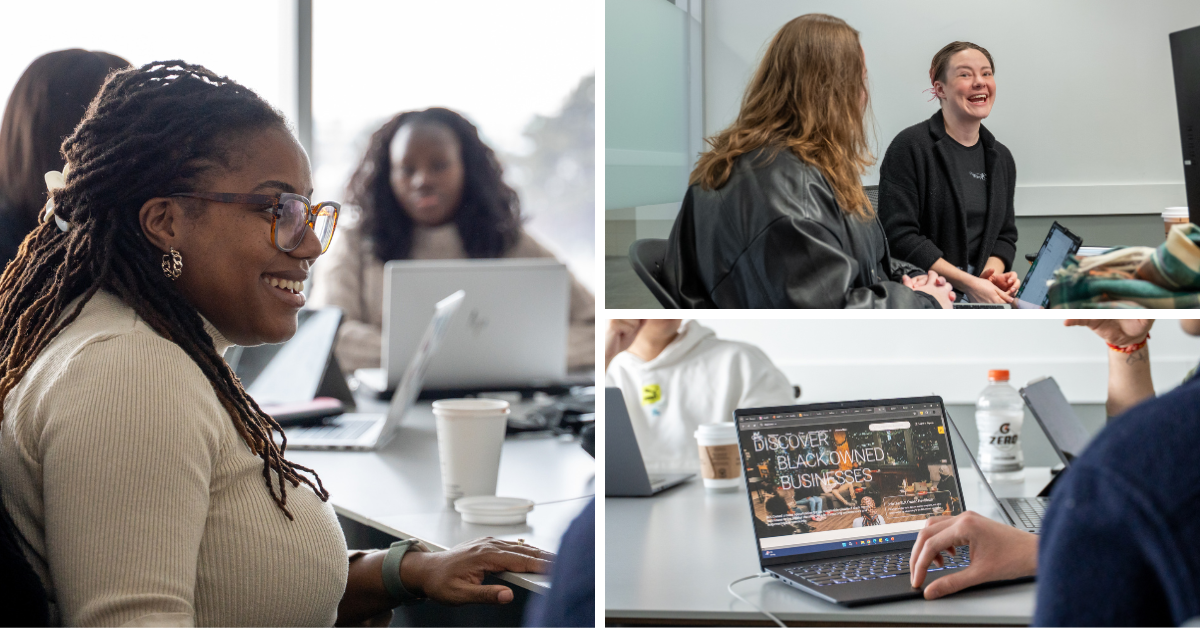ALUMNI STRATEGIC PLAN | INCLUSIVE EXCELLENCE STUDENT CLUB
Leading with joy, bold authenticity and compassionate leadership
June 23, 2025 ·
Contributed by: Sandie Kantor, DeGroote Marketing and Communications
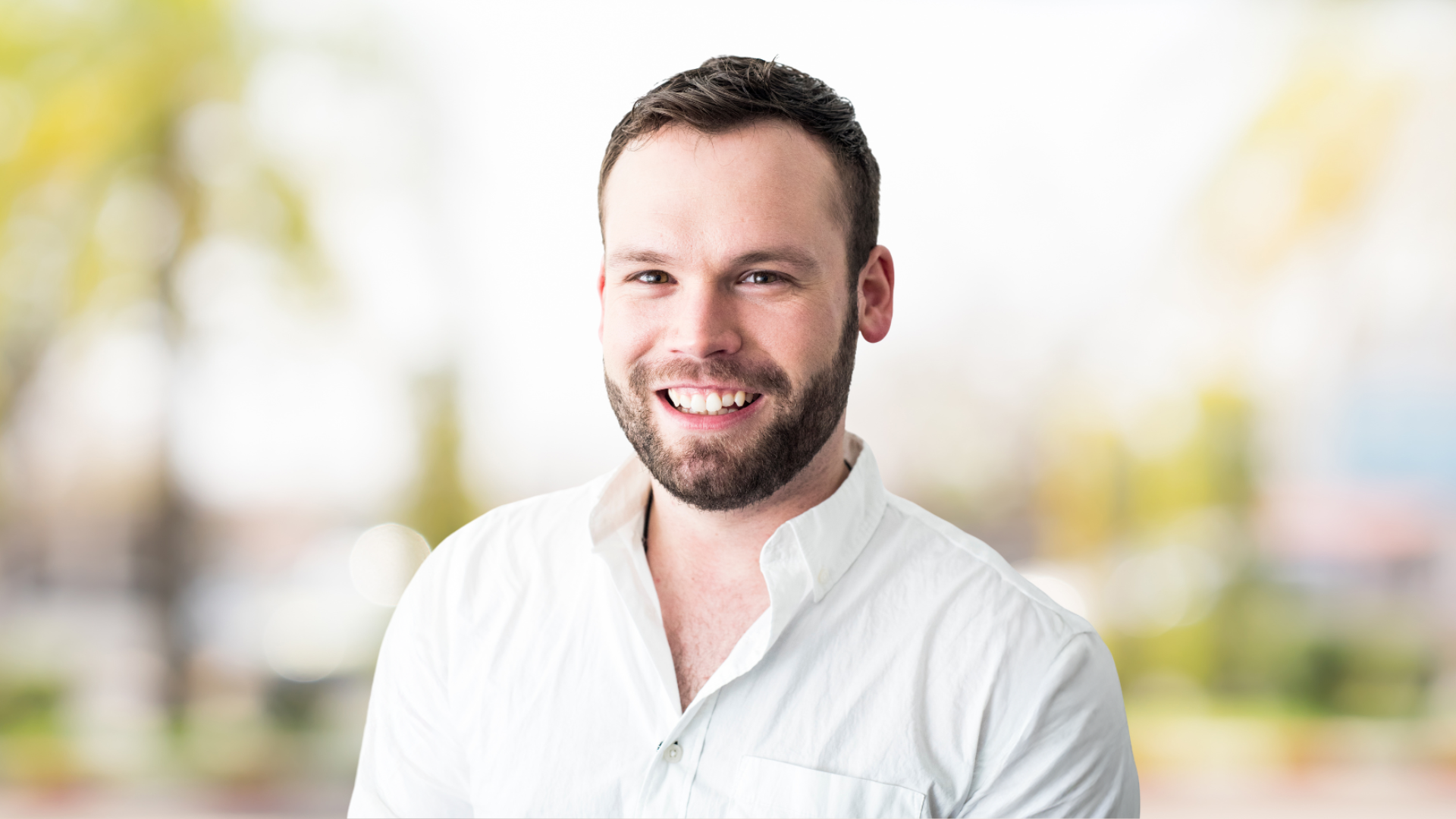
Bobby MacPherson (MBA ‘24) is a strategic, values-driven leader with over 15 years of experience helping organizations grow through operational excellence and a deep commitment to equity.
From 2017 to 2024, Bobby played a key leadership role at Pride Toronto, guiding the organization through critical periods of transformation. Now, as Chief Operating Officer at the Tamarack Institute, Bobby supports national collaborations to end poverty and advance community-led change. In 2025, Bobby received the Community Heart Award at the Inspire Awards, recognizing the lasting contributions made in Bobby’s community.
Bobby recently sat down with Minna Durrani, a third-year commerce student and Director of External Operations for the DeGroote Pride Association, for a candid conversation about their leadership journey. Together, they explored the challenges and rewards of leading with authenticity, the role of joy in driving collective change, the importance of fostering true inclusivity and how Bobby’s time in DeGroote’s Blended Learning Part-Time (BLPT) MBA program helped expand their impact.
We’ve highlighted excerpts from their conversation below. Watch the full interview on YouTube:
Your leadership has centered on equity, inclusion and community engagement. What was the pivotal moment in your life or career that shaped your commitment to these values?
One of the most pivotal moments in my career was launching The Get REAL Movement in Halifax. At the time, we were working with students across the region to unlearn homophobic and transphobic language, and to challenge elements of discrimination.
Language is learned, and it can also be unlearned. I was able to see firsthand how small conversations can shift entire cultures in schools.
Supporting youth to feel confident in who they are and helping peers to understand what true allyship meant was incredibly impactful. It helped me, especially from a younger age, to understand my own queerness—and my own role for self-identifying my queerness—and being my own ally in that community. It showed me the power that community has and how it is rooted in education. That experience shaped everything that I was able to do and further advocate for my community.
There’s a quote in your biography that says you’ve launched community programs that blend advocacy, education and joy. Can you tell us the purpose that joy has served in the programs you’ve helped launch?
Joy is a form of connection and care. But at times it’s also a form of revolution.
Reflecting on my time at Pride Toronto, one of the programs that I’m incredibly proud of is our environmental stewardship. I was able to introduce a lot of policies and procedures, and how we interact with direct vendors and communities to push that environmental movement. So, things like removing gas-powered vehicles from the Pride Parade, investing in reusable programs—such as reusable cups at all the beverage gardens—and looking at waste reduction strategies.
Centering those changes around joy is so important, as well as inviting partners, volunteers and community members into those conversations and celebrating them collectively. Because at the end of the day, a lot of what I was doing was instinct, but also listening to the community, being able to call in people, learn from their experiences and learn from their mistakes.
And how do we move forward together in a joyous way? It’s a reminder that activism doesn’t always have to be so heavy. It can be hopeful, fun, honest and future-focused.
You’re described as a changemaker, and someone who leads with bold authenticity. Has that ever come at a cost? And how do you navigate the risks and rewards of being your full, true self to leadership?
At times, I’ve been labeled as too direct or too political, especially when it comes to naming harm or pushing for change that makes people uncomfortable. But I know that when you play things too safe, it’s very rare that that change can happen—especially at the rate that change needs to happen.
So being authentic has meant that you can show up for others who may not be able to experience the same privilege or the same power that you have in that space. And at Tamarack, it is incredibly rewarding because we’re able to build that culture where people don’t have to hide any part of themselves to lead. That kind of environment where it takes intention, it takes reflection and courage to be able to push back, especially when it’s easier to stay quiet.
But the reward is always worth it: a team that trusts each other and is able to come together and align on what the mission is at the end of the day.
What does compassionate leadership look like in practice for you?
Compassion and leadership to me is all about really being accountable and being human.
It means you may have high standards, especially in the 2SLGBTQ+ community, when so many things are at stake…because there are so many identities and oppressions and barriers and struggles. It’s hard not to want to fix everything and do it to the best of your ability. But at the end of the day, you also are only human, and it’s also about how you reflect on how you’re really doing, especially when you notice something is off. And I believe feedback needs to be delivered with care, even as you create policies and procedures.
How did your time in the BLPT program at DeGroote help you become a stronger business leader?
I walked in with a strong community lens, but walked out with the tools to scale impact: financial modeling, statistics, strategic planning, project management. I’m confident and proud to be able to say I’ve used those skills successfully in my everyday work.
Even at Pride Toronto, whether it was financial situations we were in, rewriting policies, introducing tools that are still in practice today—are a direct reflection of some of my learnings and experiences from the MBA program.
And even here at Tamarack, on a foundational level—whether it be budgeting, national consulting, mapping out team capacity—all have direct connections to my experiences with the learnings I’ve had over my time at DeGroote.
I always like to view it as what you put into something is what you get out of it.
Business plays a powerful role in shaping society. How can future business leaders across any industry ensure their decisions drive positive social change, especially for marginalized communities?
There are two main questions that I use in any community consultation project I’m working on: who benefits and who’s burdened? By asking yourself these questions, it really builds that accountability into your own systems, challenges you to think critically—and not just about your own mission statement.
Social change can’t just be a side project. It has to be embedded into everything you do, from how you recruit, how you hire, how you spend and even how you evaluate how successful your projects are or aren’t.
At Tamarack, we tie all of our projects back to the decisions around theory of change and equity commitments. When we look at how we prioritize contracts, whether they be with BIPOC or queer-owned businesses, and how we measure impact—not just by revenue, but by relationships and by our own reach. What is the point of this connection? These are the things we need to ask ourselves, because it’s more than just a dollar figure. It’s how our community is able to show up and be themselves. So, you don’t need to be a nonprofit to do that; you just need to care enough to be able to build it.
What advice would you give students or new graduates who want to advocate for diversity, inclusion and equity, but don’t know where to start?
Start with where you are and start with listening. To be honest, you don’t need a title to be able to advocate. You just need curiosity, you need courage and a willingness to get uncomfortable and to show up with vulnerability.
Read widely and seek out community voices. Don’t underestimate the power of asking good questions, and don’t be afraid to acknowledge what you don’t know. I guarantee there’s someone else in the room who doesn’t know as well. So, it can motivate people to figure out how to solve that problem. But it’s also an opportunity to give someone else a platform who knows better than you do.
When you make a mistake—this is what I emphasize the most—embrace it, own it, learn from it and keep going. Change doesn’t come from perfection. It really just comes from persistence and continuing to show up.
What does true inclusion look like, and how can organizations move beyond performative practices to get there?
True inclusion to me means people don’t have to fight to be seen, heard or respected. It means that the systems are built with, not just for people who are most impacted by it.
Performative inclusion is really about optics—but real inclusion is about outcomes.
So, looking at that shift, it really starts when the leadership is willing to listen, leadership is willing to be challenged and able to redistribute power. Just because someone may have a fancy title doesn’t mean that they need to hold all the power, but how do we distribute that power to the folks who are going to have the bigger impact.




